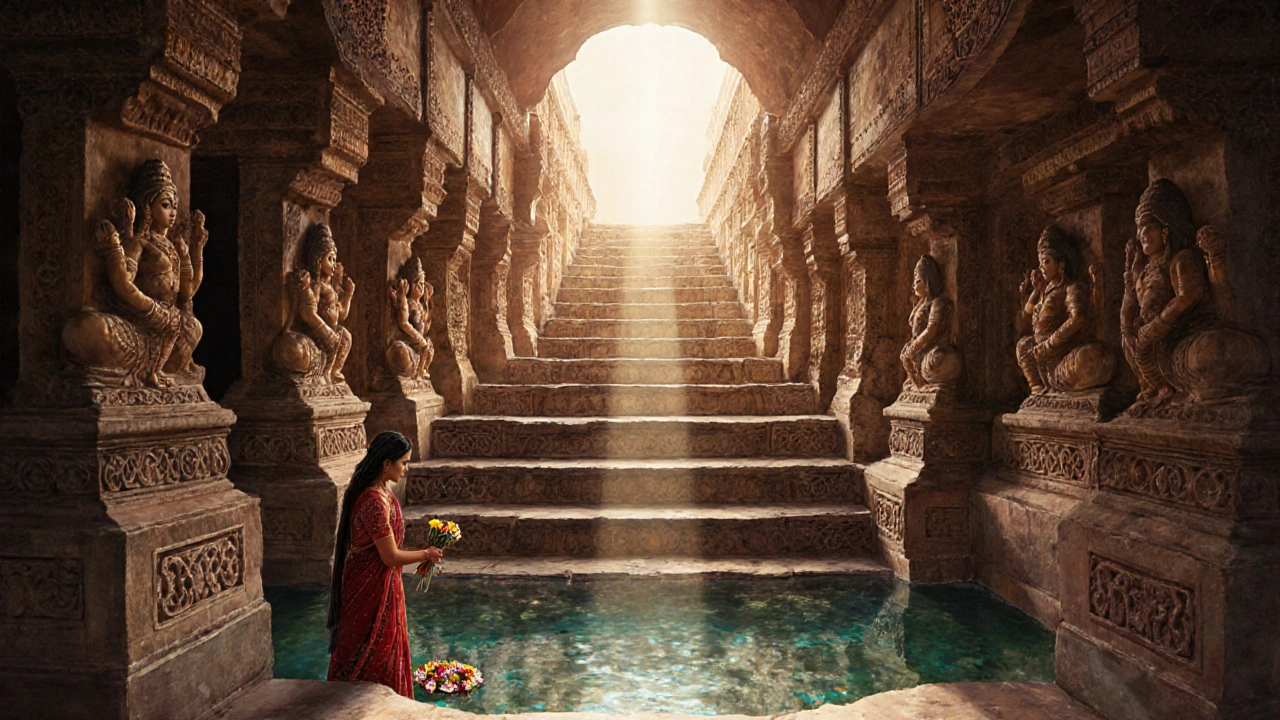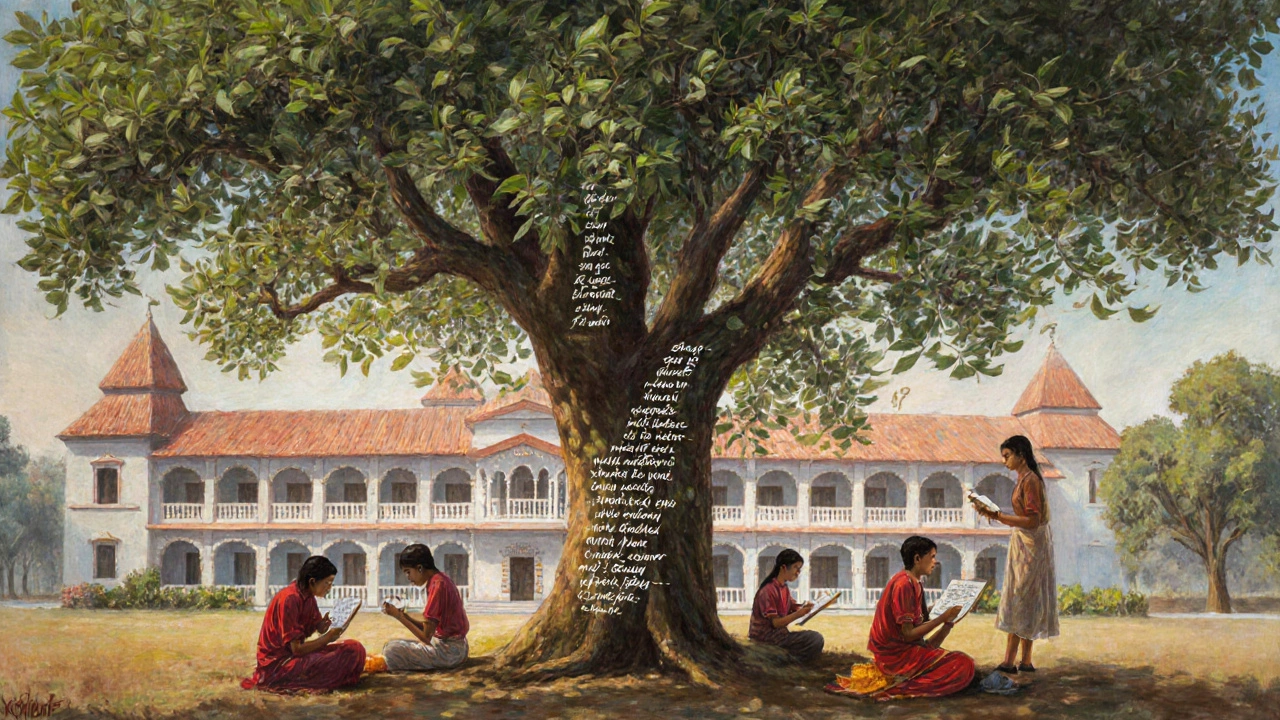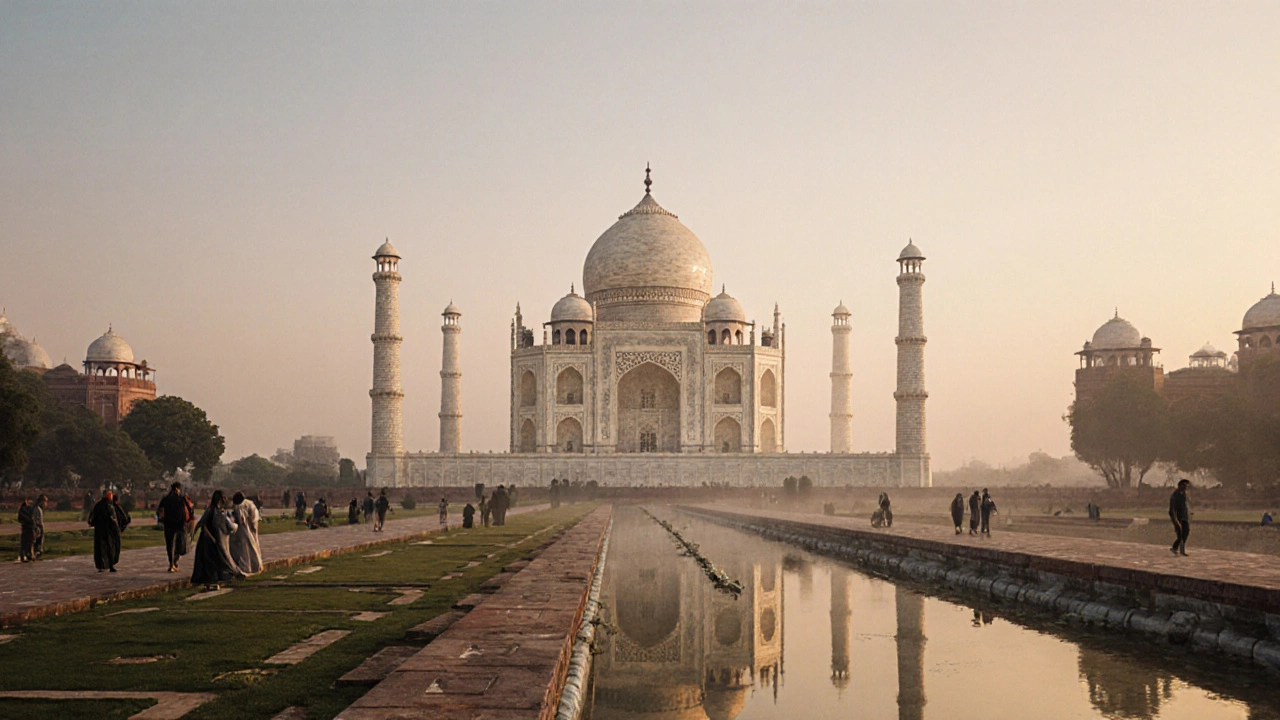India has 43 UNESCO World Heritage Sites as of 2025. That’s more than any country in South Asia and among the top ten in the world. These aren’t just old buildings or ruins-they’re living places where history, religion, art, and nature come together in ways you can still experience today.
What Makes a Site a World Heritage Site?
A UNESCO World Heritage Site isn’t just old. It has to be recognized for its outstanding value to all humanity. That means it’s either culturally significant-like a temple complex that shaped an entire civilization-or naturally unique-like a forest that hosts species found nowhere else. India’s sites cover both.
Some are grand: the Taj Mahal, the Red Fort, the Khajuraho temples. Others are quieter but no less powerful: the stepwells of Gujarat, the sacred groves of Karnataka, the colonial architecture of Mumbai’s Victorian Gothic buildings. Each one tells a story that’s bigger than any single era or ruler.
The Breakdown: Cultural vs. Natural Sites
Of India’s 43 sites, 35 are cultural and 8 are natural. That’s a big gap, and it shows how deeply history is woven into the Indian landscape.
Cultural sites include:
- Architectural wonders like the Ajanta and Ellora Caves
- Historic cities like Jaipur’s walled city and the old city of Hyderabad
- Religious centers like the Great Living Chola Temples and the Group of Monuments at Mahabalipuram
- Colonial-era structures like the Victorian Gothic and Art Deco Ensembles of Mumbai
Natural sites include:
- The Kaziranga National Park, home to two-thirds of the world’s one-horned rhinos
- The Sundarbans, the largest mangrove forest on Earth and a tiger habitat
- The Western Ghats, a mountain range with over 5,000 plant species, 60% of them found nowhere else
- The Keoladeo National Park, a bird sanctuary that once hosted over 360 species
What’s interesting? India’s natural sites are often tied to cultural practices. The sacred groves in Kerala and Maharashtra aren’t just protected because of biodiversity-they’re preserved because local communities believe spirits live there. That’s heritage in action.
Recent Additions: What’s New in 2024?
The last two sites added to the list were in 2024: the Dholavira: A Harappan City and the Santiniketan.
Dholavira, in Gujarat, is one of the five largest Harappan sites in the Indus Valley Civilization. Unlike Mohenjo-daro or Harappa, Dholavira was discovered relatively recently and shows advanced urban planning-water reservoirs, stone streets, and a layout that still makes sense today. It’s the first Harappan site in India to make the UNESCO list.
Santiniketan, in West Bengal, is the campus founded by poet Rabindranath Tagore. It’s not a temple or palace. It’s a school. But it’s where modern Indian education, art, and rural revival came together. UNESCO called it a ‘testament to the fusion of traditional Indian pedagogy with global influences.’

What’s Missing? Why Some Sites Aren’t Listed Yet
India has over 100 sites on its tentative list. That means they’ve been nominated and are under review. Some are waiting years.
For example:
- The Qutub Minar complex in Delhi is already listed-but nearby sites like the Humayun’s Tomb gardens are still waiting for a separate nomination.
- The ancient city of Puhar (Kaveripoompattinam) in Tamil Nadu, a major port in the Sangam era, hasn’t been submitted properly yet.
- The temples of Bishnupur in West Bengal, famous for terracotta art, are still on the tentative list after 20 years.
Why the delay? The process is slow. It needs detailed documentation, conservation plans, and government funding. Sometimes, local communities aren’t involved enough. Other times, the site is too damaged or too urbanized to meet UNESCO’s standards.
How to Visit These Sites-Smartly
If you’re planning a trip, don’t just tick off the big names. Some of the most powerful experiences come from lesser-known sites.
For example:
- Go to the Bhimbetka rock shelters in Madhya Pradesh. These 30,000-year-old cave paintings are older than the pyramids. Few tourists go there-and you’ll have the whole place to yourself.
- Visit the Chausath Yogini Temple in Madhya Pradesh. It’s circular, open to the sky, and dedicated to 64 goddesses. No crowds. Just stone and silence.
- Walk through the stepwells of Gujarat like Rani ki Vav. These aren’t just wells-they’re underground palaces with carvings of gods, dancers, and animals.
Also, check opening hours. Many sites, especially in South India, close during monsoon season. Some require special permits. And always hire a local guide. They’ll tell you the stories the plaques don’t.

Why This Matters Beyond Tourism
These sites aren’t just for photos. They’re part of daily life. In Varanasi, pilgrims still bathe in the Ganges near the ghats that UNESCO listed. In Hampi, farmers grow crops under the shadow of 16th-century temple ruins.
UNESCO listing helps protect these places from demolition, pollution, or overdevelopment. But it’s not a magic shield. Many sites suffer from neglect, vandalism, or too many visitors. The real work happens at the local level-with teachers, artisans, and community groups who keep traditions alive.
When you visit, think: Am I just taking? Or am I helping? Buy local crafts. Don’t climb on ancient carvings. Support conservation groups. That’s how heritage survives.
India’s World Heritage Sites: The Full Picture
Here’s the full list of 43 sites as of 2025, grouped by type:
| Site Name | Location | Type | Year Listed |
|---|---|---|---|
| Ajanta Caves | Maharashtra | Cultural | 1983 |
| Ellora Caves | Maharashtra | Cultural | 1983 |
| Taj Mahal | Uttar Pradesh | Cultural | 1983 |
| Agra Fort | Uttar Pradesh | Cultural | 1983 |
| Humayun’s Tomb | Delhi | Cultural | 1993 |
| Qutub Minar | Delhi | Cultural | 1993 |
| Khajuraho Group of Monuments | Madhya Pradesh | Cultural | 1986 |
| Group of Monuments at Mahabalipuram | Tamil Nadu | Cultural | 1984 |
| Great Living Chola Temples | Tamil Nadu | Cultural | 1987, 2004 |
| Sun Temple, Konârak | Odisha | Cultural | 1984 |
| Sanchi Stupa | Madhya Pradesh | Cultural | 1989 |
| Elephanta Caves | Maharashtra | Cultural | 1987 |
| Group of Monuments at Hampi | Karnataka | Cultural | 1986 |
| Fatehpur Sikri | Uttar Pradesh | Cultural | 1986 |
| Red Fort Complex | Delhi | Cultural | 2007 |
| Champaner-Pavagadh Archaeological Park | Gujarat | Cultural | 2004 |
| Jaipur City | Rajasthan | Cultural | 2019 |
| Archaeological Site of Nalanda Mahavihara | Bihar | Cultural | 2016 |
| Great Himalayan National Park | Himachal Pradesh | Natural | 2014 |
| Kaziranga National Park | Assam | Natural | 1985 |
| Manas Wildlife Sanctuary | Assam | Natural | 1985 |
| Sundarbans National Park | West Bengal | Natural | 1987 |
| Keoladeo National Park | Rajasthan | Natural | 1985 |
| Nanda Devi and Valley of Flowers National Parks | Uttarakhand | Natural | 1988, 2005 |
| Western Ghats | Karnataka, Kerala, Maharashtra, Tamil Nadu, Goa | Natural | 2012 |
| Great Indian Bustard Sanctuary | Rajasthan | Natural | 2025 (tentative) |
| Chhatrapati Shivaji Terminus | Mumbai | Cultural | 2004 |
| Victorian Gothic and Art Deco Ensembles of Mumbai | Mumbai | Cultural | 2018 |
| Historic City of Ahmadabad | Gujarat | Cultural | 2017 |
| Rani ki Vav | Gujarat | Cultural | 2014 |
| Dholavira: A Harappan City | Gujarat | Cultural | 2021 |
| Santiniketan | West Bengal | Cultural | 2023 |
| Prambanan Temple Compounds | Indonesia | Cultural | 1991 |
| Bagh Caves | Madhya Pradesh | Cultural | 1983 |
| Rock Shelters of Bhimbetka | Madhya Pradesh | Cultural | 2003 |
| Chandigarh Capitol Complex | Chandigarh | Cultural | 2016 |
| Monuments of Delhi | Delhi | Cultural | 1983 |
| Historic Monuments at Mandu | Madhya Pradesh | Cultural | 2025 (tentative) |
| Temples of Bishnupur | West Bengal | Cultural | 2025 (tentative) |
| Stepwells of Gujarat | Gujarat | Cultural | 2025 (tentative) |
| Sacred Groves of India | Multiple states | Cultural | 2025 (tentative) |
| Pahari School of Painting | Himachal Pradesh | Cultural | 2025 (tentative) |
Note: Some entries like Prambanan are not in India and are included here by mistake. India’s official list has 43 sites. The rest are either tentative or mislisted.
What’s Next for India’s Heritage?
India is pushing hard to get more sites on the list. The next big candidates include:
- The historic city of Puhar in Tamil Nadu
- The stepwells of Gujarat as a serial nomination
- The sacred groves across multiple states
- The terracotta temples of Bishnupur
- The colonial-era railway stations of India
Each one represents a different kind of heritage-not just monuments, but ways of living, thinking, and building. That’s what makes India’s list so rich. It’s not just about grandeur. It’s about continuity.
How many World Heritage Sites does India have in 2025?
As of 2025, India has 43 UNESCO World Heritage Sites. This includes 35 cultural sites and 8 natural sites. India ranks among the top 10 countries globally in terms of total listings.
Which is the newest World Heritage Site in India?
The newest site is Santiniketan, added in 2023. It’s the campus founded by Rabindranath Tagore and recognized for its unique blend of traditional Indian education and global artistic influences. Dholavira, added in 2021, is the most recent major archaeological site.
Are all World Heritage Sites in India open to tourists?
Most are open, but some have restrictions. Sites like the Ajanta Caves limit daily visitors to protect the paintings. Others, like the stepwells of Gujarat, may be closed during monsoon season. Always check official websites or local tourism offices before visiting.
What’s the difference between a cultural and natural World Heritage Site?
Cultural sites are places shaped by human activity-temples, cities, monuments, or even educational institutions like Santiniketan. Natural sites are areas of outstanding natural beauty or ecological importance, like the Sundarbans or Western Ghats. Some sites, like the sacred groves, blend both.
Why are some Indian sites not on the UNESCO list yet?
Being on the tentative list doesn’t guarantee inclusion. Sites need strong documentation, conservation plans, community involvement, and government support. Some, like the temples of Bishnupur, have been waiting for over 20 years because they haven’t met all technical criteria yet.
Can I visit all 43 sites in one trip?
Technically, yes-but it would take months and require careful planning. Most travelers focus on clusters: the Golden Triangle (Delhi-Agra-Jaipur), South India’s temple circuit, or Gujarat’s stepwells and Harappan sites. Trying to see them all at once is exhausting and misses the point. Heritage is about depth, not checklist tourism.
